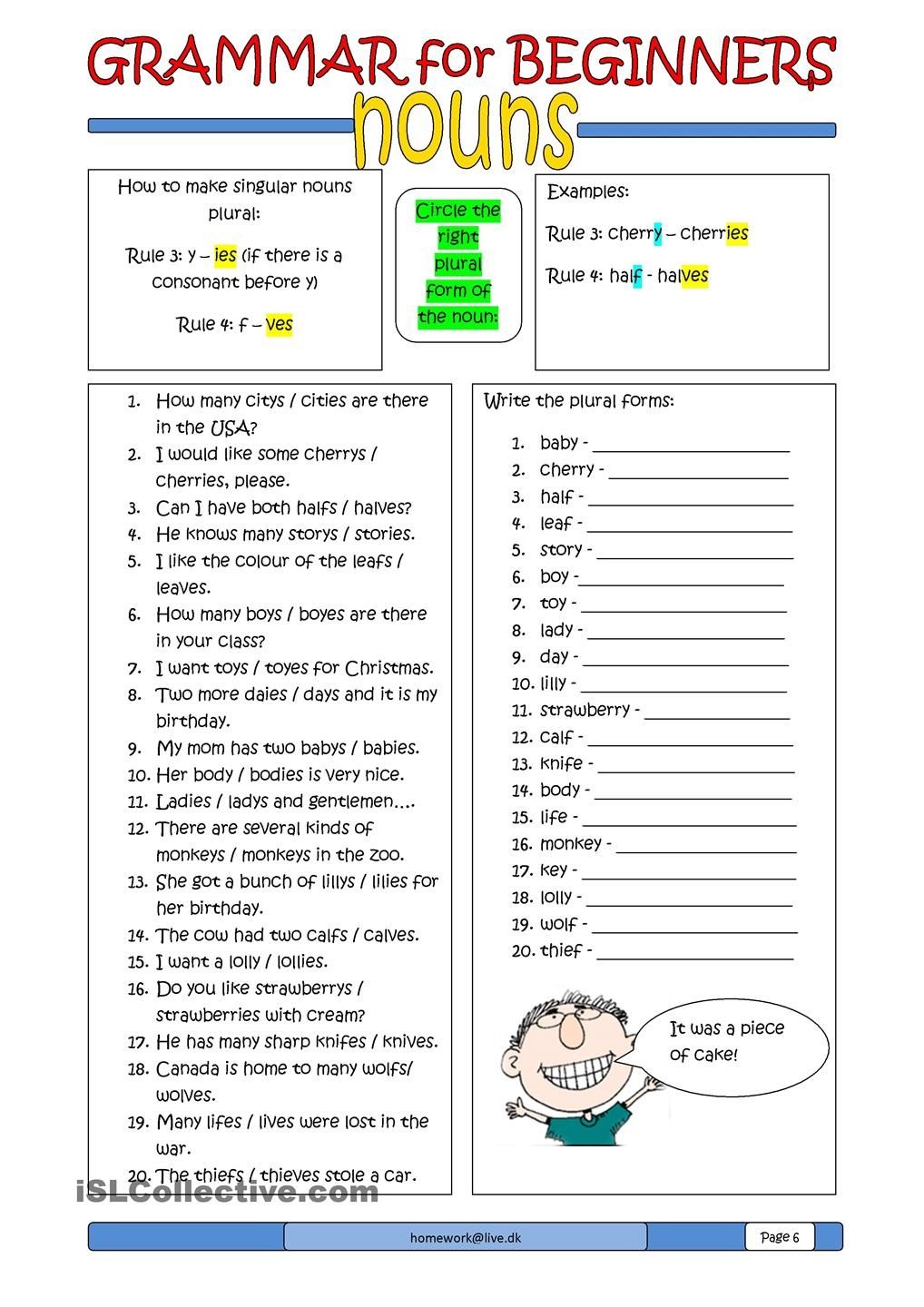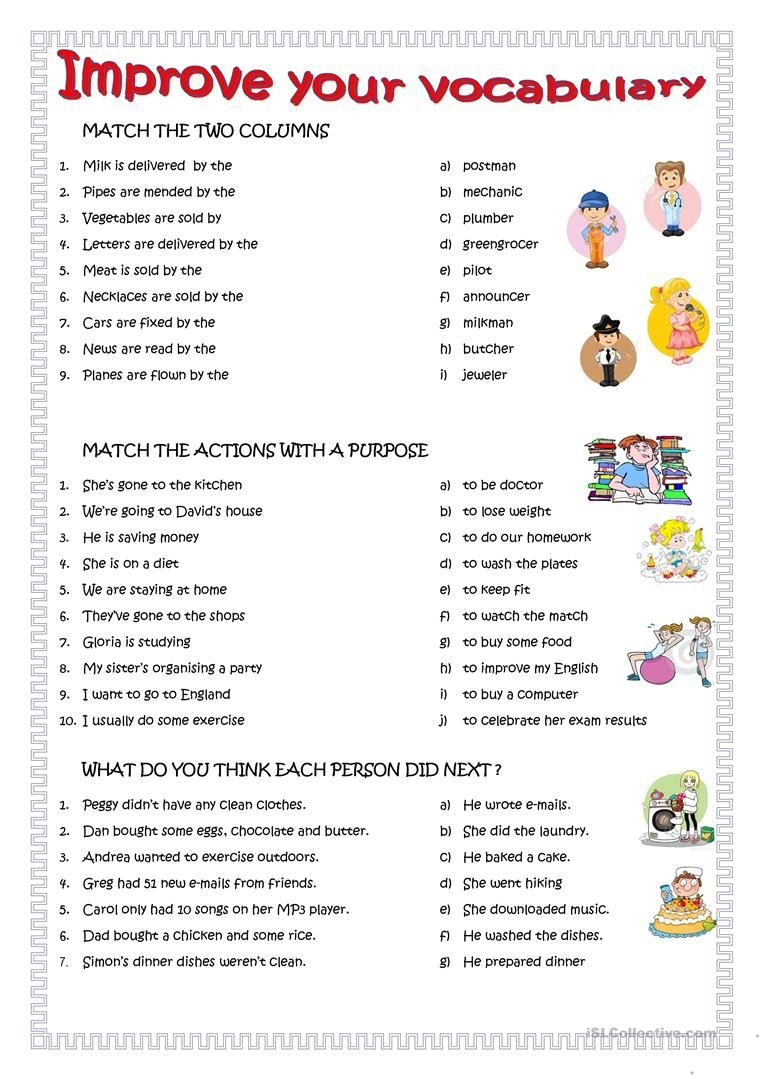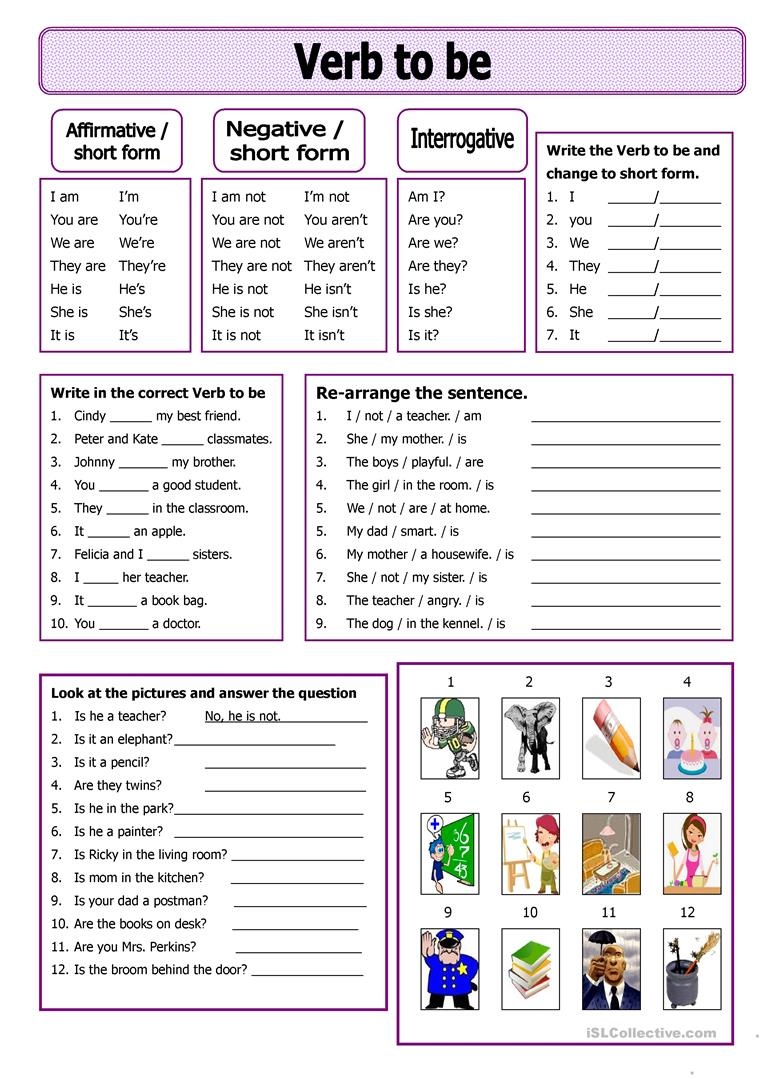
Unlocking Potential: The Indispensable Role of High Beginner ESL Worksheets
Learning English as a second language is a journey, not a destination. It’s a progressive path where each stage builds upon the last, and mastering foundational concepts is paramount for future success. One of the most critical phases in this journey is the "high beginner" stage. Learners at this level have moved beyond the absolute basics – they can introduce themselves, understand simple questions, and form rudimentary sentences. However, they are not yet comfortable with complex grammar, nuanced vocabulary, or fluent communication. This is precisely where the strategic implementation of High Beginner ESL Worksheets becomes an invaluable tool, acting as a bridge between foundational knowledge and more advanced proficiency.
This article delves into the indispensable role of High Beginner ESL Worksheets, exploring their characteristics, the key areas they cover, their various types, and how both teachers and self-learners can leverage them to consolidate learning, build confidence, and pave the way for true English fluency.

Defining the High Beginner ESL Learner

Before diving into the worksheets themselves, it’s crucial to understand who the "high beginner" is. These learners typically fall into the A2 level according to the Common European Framework of Reference for Languages (CEFR). They can:

- Understand sentences and frequently used expressions related to areas of most immediate relevance (e.g., very basic personal and family information, shopping, local geography, employment).
- Communicate in simple and routine tasks requiring a direct exchange of information on familiar and routine matters.
- Describe in simple terms aspects of their background, immediate environment, and matters in areas of immediate need.


While they possess a basic vocabulary and grasp of simple sentence structures, they often struggle with:
- Using various tenses consistently and accurately (beyond simple present/past).
- Constructing compound or complex sentences.
- A wider range of vocabulary and idioms.
- Fluency and natural pronunciation.
- Understanding authentic, fast-paced speech.




The goal for a high beginner is to solidify their existing knowledge while gently introducing them to new grammatical structures and expanding their vocabulary, all within a supportive and accessible framework. This is the precise niche filled by effective High Beginner ESL Worksheets.
Why Are High Beginner ESL Worksheets Crucial?
The value of well-designed High Beginner ESL Worksheets cannot be overstated. They offer a structured, repetitive, and often engaging way to reinforce learning and address common challenges faced by learners at this stage:
- Consolidation of Basics: They provide ample opportunity to practice and internalize grammar points and vocabulary introduced at the absolute beginner level (e.g., simple present, basic verbs, common nouns). Repetition through varied exercises helps move knowledge from short-term to long-term memory.
- Gradual Introduction of New Concepts: Worksheets can introduce slightly more complex grammar (e.g., simple past irregular verbs, future tenses, basic modals) and vocabulary in manageable chunks, preventing overwhelm.
- Targeted Practice: They allow learners to focus specifically on areas where they struggle, whether it’s a particular verb tense, a set of prepositions, or a thematic vocabulary set.
- Building Confidence: Successfully completing a worksheet provides a sense of accomplishment, which is vital for motivation. As learners see their progress, their confidence in using English grows.
- Structured Learning: Worksheets offer a clear path for practice, often progressing from controlled practice (e.g., fill-in-the-blanks) to freer practice (e.g., sentence creation).
- Independent Learning: They empower self-learners to study at their own pace, identify their weaknesses, and review material without constant teacher intervention.
- Reinforcement and Assessment: For teachers, worksheets serve as excellent tools for reinforcing classroom lessons, assigning homework, and informally assessing student comprehension.
Characteristics of Effective High Beginner ESL Worksheets
Not all worksheets are created equal. To be truly effective for high beginner ESL learners, they should possess several key characteristics:
- Clear and Concise Instructions: Language used in instructions should be simple, direct, and unambiguous, often supported by examples.
- Appropriate Difficulty: They should be challenging enough to promote growth but not so difficult as to cause frustration. The content should be within the learner’s zone of proximal development.
- Variety of Exercise Types: Monotony can lead to disengagement. Good worksheets incorporate various exercise formats (matching, fill-in-the-blanks, multiple-choice, true/false, short answer, sentence creation).
- Engaging and Relevant Topics: Content should relate to learners’ everyday lives, interests, or common scenarios (e.g., daily routines, shopping, travel, food, describing people/places).
- Focus on Practical Language: The language practiced should be functional and immediately useful in real-world communication.
- Repetition with Variation: Key vocabulary and grammar points should reappear in different contexts to ensure deeper understanding and retention.
- Visual Aids: Pictures, diagrams, and simple illustrations can significantly enhance comprehension and make the worksheets more appealing, especially for visual learners.
- Scaffolding: Often, worksheets will gradually increase in complexity, providing more support at the beginning and then slowly reducing it.
- Answer Keys: For self-learners, an accessible answer key is essential for self-correction and understanding mistakes.
Key Areas Covered by High Beginner ESL Worksheets
Mastering these areas is precisely where High Beginner ESL Worksheets shine, providing targeted practice across the four core language skills:
1. Grammar Focus: Building Solid Foundations
At the high beginner level, grammar worksheets focus on solidifying previously introduced structures and introducing new, slightly more complex ones.
- Present Simple and Present Continuous (Review & Contrast): Worksheets will often require learners to differentiate between actions happening now and habitual actions.
- Past Simple (Regular and Irregular Verbs): This is a crucial area. Worksheets will feature exercises on forming regular past tense verbs (-ed), and extensive practice with common irregular verbs (go-went, have-had, see-saw).
- Future Tenses (Will vs. Going To): Understanding the difference in usage and form.
- Comparatives and Superlatives: Forming and using adjectives and adverbs to compare and contrast.
- Prepositions of Place and Time: In, on, at, under, behind, next to, etc., and their correct usage.
- Basic Modal Verbs: Can, could, should, must, have to – focusing on permission, ability, advice, and obligation.
- Countable and Uncountable Nouns: And their associated quantifiers (some, any, much, many, a lot of).
- Articles (A, An, The, No Article): A common challenge for many learners, requiring extensive practice in various contexts.
- Question Formation: Reviewing Wh-questions and Yes/No questions with various tenses.
- Adjectives and Adverbs: Basic usage and placement.
2. Vocabulary Expansion: Broadening the Lexical Repertoire
Vocabulary worksheets for high beginners move beyond isolated words to include common phrases, collocations, and thematic sets.
- Thematic Vocabulary: Expanding on common topics like daily routines, jobs, hobbies, food and drink, travel, city life, family members, clothes, health, and basic emotions.
- Common Phrasal Verbs: Introducing a small, high-frequency set (e.g., wake up, get up, put on, take off).
- Antonyms and Synonyms: Simple exercises to build word association.
- Collocations: Helping learners understand which words naturally go together (e.g., "make a mistake," "do homework").
- Word Families: Basic noun/verb/adjective forms (e.g., "information," "inform").
3. Reading Comprehension: Understanding Simple Texts
Worksheets in this area focus on developing the ability to read and understand short, accessible texts.
- Short Narratives/Stories: Simple tales with clear plotlines.
- Simple Descriptions: People, places, objects.
- Basic Emails/Messages: Understanding the gist and specific details.
- Informational Texts: Simple facts about animals, countries, or historical events.
- Exercise Types: True/False statements, multiple-choice questions, matching headings to paragraphs, identifying main ideas, answering direct questions based on the text.
4. Writing Practice: From Sentences to Short Paragraphs
Writing worksheets encourage learners to produce their own language in a structured manner.
- Sentence Construction: Unscrambling words to form correct sentences.
- Sentence Transformation: Changing sentences from one tense to another, or from affirmative to negative/interrogative.
- Guided Writing: Completing sentences or paragraphs with prompts.
- Short Descriptions: Describing a picture, a person, or a daily routine.
- Simple Narratives: Writing a short story using past simple.
- Basic Email/Letter Writing: Practicing common greetings, closings, and simple requests or information.
- Form Filling: Practicing providing personal information.
5. Listening and Speaking Integration (Indirectly)
While worksheets are primarily text-based, they can often be integrated with listening and speaking activities.
- Listening Gap-Fills: Worksheets paired with audio recordings where learners fill in missing words or phrases.
- Dialogue Completion: Completing dialogues based on context or listening.
- Discussion Prompts: Worksheets can provide topics or questions for subsequent pair or group discussions, moving from written practice to oral application.
- Role-Play Scenarios: Text-based prompts that learners then act out.
Types of High Beginner ESL Worksheets
The variety of worksheet types keeps learning engaging and addresses different learning styles:
- Fill-in-the-Blanks: For grammar, vocabulary, or dialogue completion.
- Matching Exercises: Words to definitions, pictures to words, sentence halves, questions to answers.
- Multiple Choice: For grammar, vocabulary, or reading comprehension.
- True/False Statements: For reading or listening comprehension.
- Sentence Unscramble/Ordering: To practice sentence structure.
- Error Correction: Identifying and correcting grammatical or spelling mistakes.
- Picture Description: Writing sentences or short paragraphs about an image.
- Crosswords and Word Searches: Excellent for vocabulary reinforcement.
- Dialogue Practice: Completing or creating conversations.
- Short Answer Questions: Requiring learners to produce their own responses.
How to Effectively Use High Beginner ESL Worksheets
Whether you are a teacher or a self-learner, maximizing the benefits of these worksheets requires a strategic approach:
For Teachers:
- Supplement Lessons: Use worksheets to reinforce grammar or vocabulary introduced in class.
- Homework: Assign them for independent practice outside of class.
- In-Class Practice: Facilitate pair work or group activities using worksheets, encouraging peer teaching and discussion.
- Assessment: Use them as quick checks of understanding or informal quizzes.
- Differentiated Instruction: Provide different worksheets based on student needs and progress.
- Follow-Up Activities: Use worksheet content as a springboard for speaking activities, role-plays, or writing tasks.
For Self-Learners:
- Be Consistent: Dedicate regular time to work through worksheets. Short, frequent sessions are more effective than long, sporadic ones.
- Understand the "Why": Don’t just fill in blanks. Try to understand the rule or meaning behind each answer.
- Use a Dictionary (Wisely): Look up new vocabulary, but try to deduce meaning from context first.
- Check Your Answers: Crucial for learning from mistakes. Don’t just copy the answer; understand why your initial answer was wrong.
- Don’t Be Afraid to Make Mistakes: Errors are part of the learning process. They highlight areas that need more attention.
- Integrate with Other Learning: Pair a grammar worksheet with listening to songs or watching simple videos that use that grammar.
- Review Regularly: Revisit completed worksheets after a week or two to ensure retention.
- Create Your Own Sentences: After completing an exercise, try to create new, original sentences using the vocabulary or grammar points.
Challenges and Considerations
While invaluable, there are some considerations when using High Beginner ESL Worksheets:
- Quality Varies: Not all free worksheets online are of high quality. Look for reputable sources.
- Over-Reliance: Worksheets are a tool, not the sole method of learning. They must be balanced with speaking practice, listening, reading authentic materials, and real-world interaction.
- Lack of Context: Some isolated grammar exercises can lack context, making them less effective. Look for worksheets that provide meaningful scenarios.
- Feedback: For self-learners, without a teacher, getting personalized feedback on more open-ended writing tasks can be challenging.
Where to Find High Beginner ESL Worksheets
A plethora of resources exists for finding high-quality worksheets:
- Reputable ESL Websites: Many sites offer free printable worksheets categorized by level and topic. Look for well-known educational publishers or non-profit language organizations.
- ESL Textbooks and Workbooks: These often come with accompanying practice exercises.
- Teacher-Created Materials: Many teachers share their resources online.
- AI Tools: While nascent, AI tools can generate practice exercises, but always review for accuracy and pedagogical soundness.
Conclusion
In conclusion, High Beginner ESL Worksheets are far more than just busywork; they are fundamental components of a well-rounded English language learning program. They provide the necessary structure, repetition, and targeted practice that high beginner learners need to consolidate their foundational knowledge, systematically tackle new concepts, and build the confidence required to progress. By carefully selecting and strategically utilizing these valuable resources, both educators and self-learners can ensure a smooth, effective, and ultimately successful transition from the initial stages of English acquisition to the threshold of intermediate fluency. Embrace the power of the worksheet, and watch as high beginner learners unlock their full potential in the English language.
